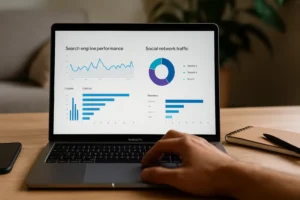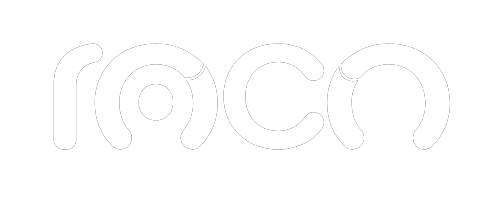The CTR in Google Ads is one of the most important metrics for evaluating the performance of your campaigns. A low click-through rate not only reduces conversion opportunities, it also increases the cost per click and affects your ad ranking.
In this article, we'll show you how to increase Google AdWords CTR with practical, easy-to-implement strategies. You'll learn what CTR is, why it influences performance, and how to improve it to achieve more effective and profitable campaigns.
What is CTR in Google Ads?
CTR (Click Through Rate) is the percentage of clicks an ad receives in relation to the number of times it is displayed. This metric indicates how many users find your ad relevant or interesting. In the context of international Google AdsA good CTR improves campaign performance and can reduce cost per click. It's a direct signal of how well you connect with the user's search intent.
Why is CTR so important in Google Ads?
Google aims to provide relevant results to users. Therefore, if an ad appears constantly but doesn't receive clicks, the system interprets it as not being useful for that search. Consequently, its visibility may decrease. A low CTR in Google Ads affects the ad's relevance and, consequently, its performance within the platform.
How to Increase CTR in Google AdWords?
Improving the CTR in your Google Ads campaigns helps increase visibility, reduce cost per click, and achieve better results with the same budget. Knowing how to increase CTR in Google AdWords involves applying strategic adjustments that better connect with user intent. Here we share 10 practical techniques to achieve this:
1. Adjust keyword matching
Use appropriate combinations (broad modified, phrase, exact) based on your goals. This way, you'll avoid irrelevant impressions that lower your CTR.
2. Add negative keywords
Exclude terms that don't add value or attract clicks that don't convert. This cleans up your traffic and improves overall performance.
3. Improve ad relevance
Align your title and description with your keywords and user intent. The more useful your ad appears, the more clicks it will get.
4. Use attractive titles with clear value
Incorporate benefits, numbers, calls to action, or unique offerings (e.g., “Free!”, “30% off,” “For companies in Colombia”). You'll attract more attention compared to your competitors.
5. Implement ad extensions
Extensions (callbacks, sitelinks, callouts, prices) not only provide additional value, but also increase the size of the ad in the SERP and increase its click-through rate.
6. Customize by device or location
An ad more tailored to mobile or the user's location may be more relevant and have a higher CTR. Use bid adjustments or specific targeting to show the ideal message.
7. A/B test your ads
Create multiple versions of the same ad by changing titles, descriptions, or CTAs. Google Ads will display the best-performing version, and you'll be able to identify which text generates the most clicks.
8. Improve the visible URL
Take advantage of the display URL field to include key terms or calls to action such as: /discount-today , Agencia Roco /free-consultation, which increase user interest.
9. Optimize audience segmentation
Combine keywords with custom or purchase-intent audiences. Showing your ad to people who are already interested increases the likelihood of a click.
10. Use urgency and scarcity ethically
Messages like “Last spots left,” “Available today only,” or “Promotion until Sunday” generate a sense of urgency that increases CTR, as long as they are real and well-executed.
How Does CTR Impact the Cost of Your Campaigns?
The Google Ads system operates on a pay-per-click basis. The cost of each click and ad position are directly related to the keyword's Quality Score, assessed through three key elements: landing page experience, ad relevance, and expected CTR.
If your CTR in Google Ads is low, it negatively impacts your Quality Score. As a result, your cost per click increases, and your campaign becomes more expensive without necessarily generating better results. In other words: a low CTR costs money.
What is Considered a Low CTR?
There's no single number. The context of each campaign type influences this. For example, Display campaigns typically have a lower CTR than Search campaigns. However, as a general guideline, we consider a CTR lower than 7% in Search campaigns to be concerning, although this can vary depending on the niche and objectives. Therefore, it's essential to analyze your metrics in context and make data-driven decisions.
The best way to know if your CTR is low is to check the expected CTR for each keyword, which shows how you compare to your competitors in Google Ads.
Optimize Your Campaigns with Google Ads Experts!
At Agencia RocoWe optimize your campaigns with data-driven strategies, persuasive copywriting, and intelligent targeting. Improve the relevance of your ads, reduce your cost per click, and convert more without overspending.





